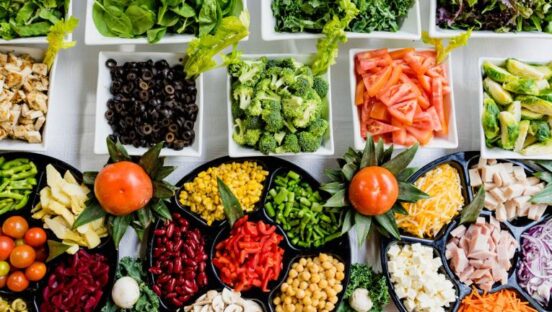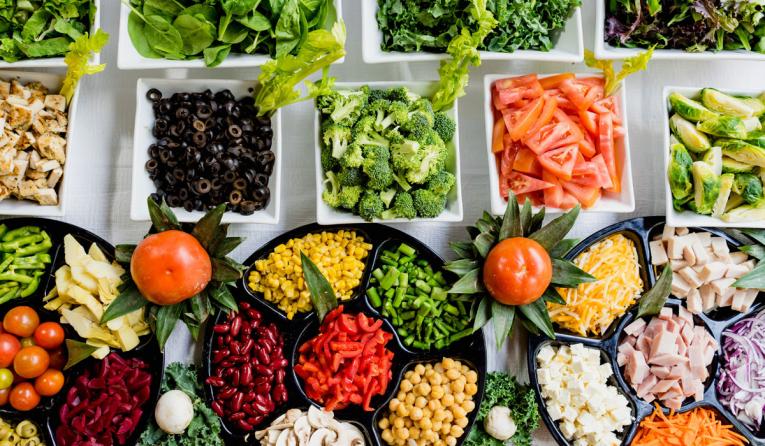The food supply chain is a complicated and multidimensional system. Perishable foods like fresh produce and fresh meat that might spoil or grow harmful bacteria must be handled with tight control of inventory and storage conditions. This article explores how the use of intelligent labeling can provide the required data needed to make the best decisions when managing food along the entire supply chain until it reaches the consumer.
Enhanced Traceability Requirements
The CDC estimates that 48 million people in the United States fall sick, 128,000 are hospitalized, and 3,000 die from foodborne diseases each year. To combat this huge problem, it is mission critical to take preventive actions such as improving storage conditions and expiration date management, as well as to improve reaction timing and accuracy in case of incidents of contaminated food that must be prevented from reaching the consumer.
At the GS1 Connect 2023 event in Denver, one of the hot topics was the FDA’s Food Safety Modernization Act (FSMA). FSMA’s Section 204 specifically addresses traceability requirements. The final rule (Food Traceability Final Rule) establishes additional traceability recordkeeping requirements for certain foods, beyond those in existing regulations.
At the core of this rule is the mandate that persons subject to the rule who manufacture, process, pack, or hold foods that are on the Food Traceability List (FTL), maintain records containing key data elements (KDEs) associated with specific critical tracking events (CTEs); and, if requested, provide information to the FDA within 24 hours. The compliance date for all persons subject to the recordkeeping requirements is January 20, 2026. One technology that is quickly gaining traction in the industry to support efficient compliance with FSMA 204 is radio frequency identification (RFID).
What exactly is RFID?
In simplistic terms, RFID is a technology that uses radio waves to identify and track items. One of the key benefits of RAIN RFID chips is that they need no external power supply to operate; instead, they use energy supplied by the reader to transmit and receive data.
The GS1 standard is well established within the industry and in use for RAIN RFID tags ensuring interoperability and multi-vendor availability. The tags usually store serialized product identifiers but can also store more data, such as expiration dates and lot numbers.
Another benefit is that the data stored on RAIN RFID tags and labels attached to food packaging can be read and captured at high speed and without the need for direct line-of-sight of the reader. This enables a high degree of automation, saving time and increasing accuracy because the human error factor associated with manual handling is mostly removed.
Knowing your Inventory
RAIN RFID supports availability of accurate inventory data—specifically needed for forecasting and replenishment activities. Food retailers and quick service restaurants need to know when stocks are running low and need to be replenished.
In addition, concerns about food waste are rising. Based on estimates from the U.S. Department of Agriculture (USDA) between 30–40 percent of what is produced is thrown away, which corresponds to approximately $161 billion per year. Easy access to the expiration dates via RFID enables restaurants and convenience stores to identify products approaching their sell-by dates more effectively.
Combating Food Fraud
Economically motivated adulteration (EMA) is also a big challenge. It occurs when a valuable ingredient or part of a food is left out or substituted intentionally or when a substance is added to it to make it appear better or of greater value. For example, when a cheaper vegetable oil is used to dilute an expensive olive oil. Another typical example is mislabeling food as being organic. According to the FDA, recent outside estimates put the cost of annual losses due to food fraud as high as $40 billion. But it is not just an economic issue. Depending on what is added, substituted, or left out, food fraud can lead to health issues or worse. A frequent example is allergic reactions to hidden, substituted ingredients. RAIN RFID labeling drastically reduces opportunities for food fraud by enabling more accurate inventory control and greater supply chain visibility.
Ultimately, all entities in the food supply chain need to work together to speed up the adoption of technologies that deliver greater efficiencies and protect consumers from potential health risks. The adoption of RAIN RFID technology that supports FSMA 204 traceability helps ensure supply chain visibility. RAIN RFID requires no line of sight for reading and hundreds of items can be read within seconds.
Moreover, RAIN RFID technology offers consistent high-read performance with some manufacturers offering scalable memory options to store serialized product identifiers as well as important attributes such as expiration dates and lot numbers. These features allow suppliers and retailers to track and trace goods at the item level, guaranteeing that they are secure and in good condition up until the point of sale.
Kurt Bischof is the director marketing UCODE, NXP Semiconductors.












